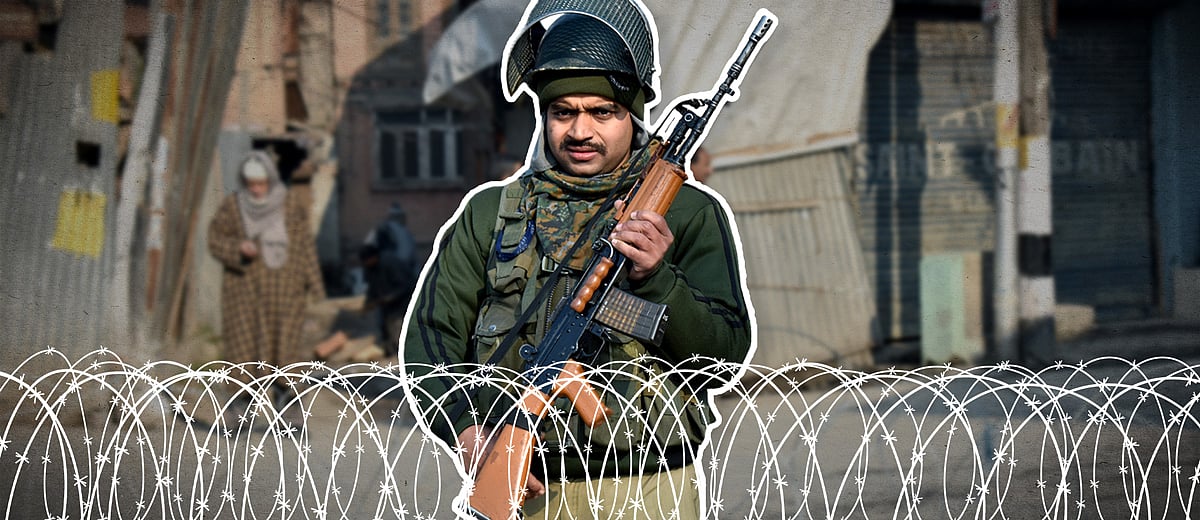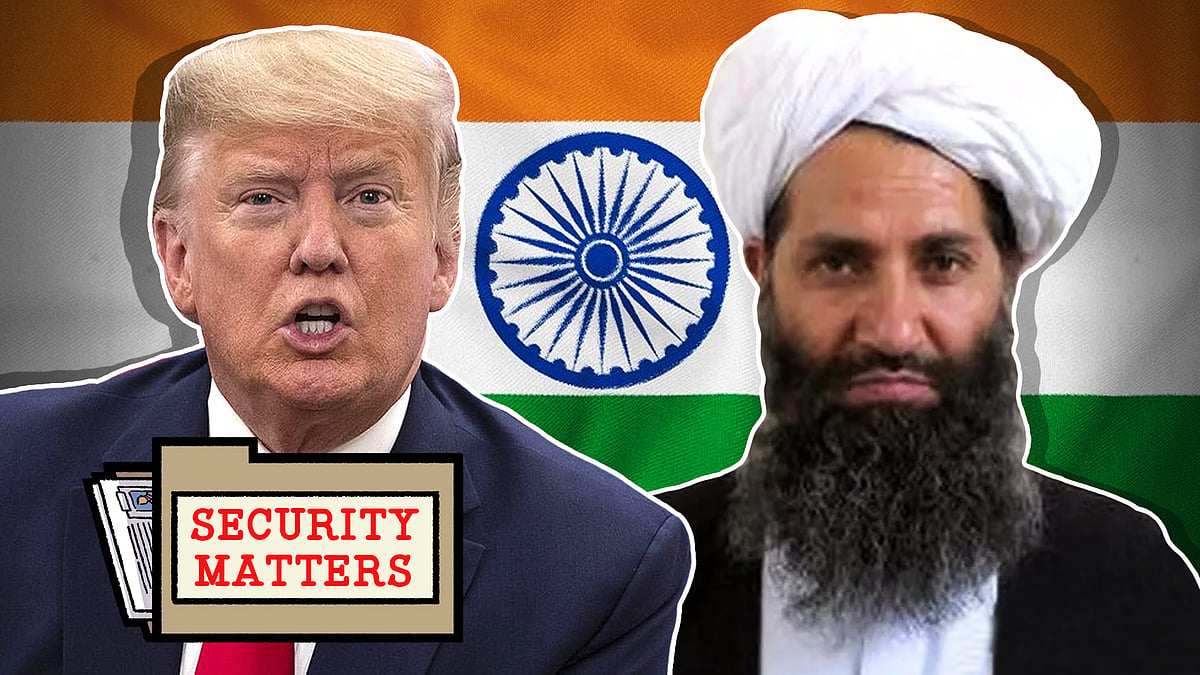Terror in Kashmir has a new edge, and regional uncertainty makes it worse
A massive response to last August’s constitutional changes is yet to come. But it will, either this summer or the next.
The death of a young Kashmiri at the hands of the Central Reserve Police Force after he apparently jumped a barricade on Wednesday has set Kashmir on edge again.
The emotions that the incident elicited remind one of the anger that was generated when the Border Security Force killed 17-year-old Zahid Farooq near Brein on the outskirts of Srinagar in 2010. Fury over three such incidents caused ferocious agitations which lasted several months that summer.
The forces must be careful not to give more cause for public anger. So far, their record over the past couple of years has been largely clean in terms of killings. Although several militants have been eliminated, and a vast number of troops were deployed last August, the forces avoided killing non-combatants. Such deaths tend to stir mass fury.
A delicate moment
This is a particularly bad time for this sort of issue to erupt. Whereas militancy was almost non-existent in early 2010, alarming signs of an enhanced and very lethal level of militancy have recently emerged. Adding furious mobs to deadly terrorism could make for a hugely explosive cocktail.
Indeed, Wednesday’s death resulted at least partly from increased tension on both sides. The forces were on high alert after warnings of a suicide mission. And Kashmiri youth are on a short fuse over cumulative frustrations, not the least of which stems from disrupted internet and phone connectivity.
A Kashmiri teacher spoke to me of hopelessness and anger over the “double lockdown”: first after last year’s constitutional changes, and now for the pandemic. Students are frustrated; apart from a few days in March, there have been no classes since August. And the “communication gag” only “multiplies the anger”, making people feel like “collective criminals”, she added.
Lethal training
These factors form the gloomy backdrop for new trends in terrorism. Startling successes in at least three encounters with the forces since early April indicate that much better trained terrorists are around. That they are infiltrating even while the huge snowfall of this past winter has yet to melt indicates that many more might turn up this summer.
The five intruders who managed to kill an entire unit of Special Forces commandos must have been extraordinarily well-trained. I have said for a decade now that the training module that prepared the 10 fellows who wrought havoc in Mumbai in 2008 could not have been set up for just 10 boys. More must surely have been trained. Could it be that such men are now crossing the Line of Control?
Meanwhile, a number of Kashmiri youth have signed up for militancy in recent weeks. And during agitations following the recent killing of Hizbul Mujahideen “commander” Riyaz Naikoo, there were violent struggles between the local population and the police.
Lessons from history
I have a sinking feeling about all this, because it’s not entirely unexpected. In fact, I more or less predicted it the day the constitutional changes on Jammu and Kashmir were introduced last August.
A few days later, a Bharatiya Janata Party spokesman berated me during a TV debate for being “pessimistic”. There was good reason for pessimism. Based on recent history, I feared a revolt, not immediately, but after a year or two. It was a couple of years after the titles of “prime minister” and “Sadr-e-Riyasat” were reduced to “chief minister” and “governor'' that Kashmir’s first militant group, Al Fatah, came up in 1967.
And a massive armed revolt erupted a couple of years after the ham-handedly rigged 1987 Assembly election. In The Story of Kashmir, I have shown the link between that rigging and that eruption. Abdul Ahad Waza, Pakistan’s point man to initiate militancy, was briefly in jail where he met young Ishfaq Majid Wani, who had been jailed for pelting stones at Farooq Abdullah soon after those elections. By 1989, Ishfaq had become the “chief commander” of the Jammu Kashmir Liberation Front.
Wrong calculations
The massive deployment of forces on the eve of the constitutional changes indicated that the government presumed that young Kashmiris would rush out of their homes pell-mell, pelting stones, immediately after the decision was announced. In fact, BJP workers in Kashmir were told that the government was prepared for very large numbers to be killed in long drawn-out mayhem.
Policymakers obviously extrapolated that scenario from what happened after Hizb “commander” Burhan Wani was killed in 2016. That indicates a superficial understanding of what happened then. Most likely, a coordinated plan was put into motion the night Burhan was killed. Five to six hundred loudspeakers were in action by dawn, and just about every mob attacked a security force camp that morning, something that had never happened before.
Agents provocateurs at each location channeled highly strung emotions into the contours of the coordinated plan. In fact, I suspect information on Burhan’s whereabouts may have been planted from across the Line of Control in order to spark those agitations.
A frittered opportunity
It would be foolish to think that Pakistan would not see the surprise constitutional changes as an opportunity to undermine the Indian state in Kashmir. But it would be equally foolish to think it would come up with a plan overnight. That was bound to take time.
Addressing the elite of the Hindutva movement at the India Foundation’s Ideas Conclave on the last day of February, I predicted that a delayed response could come either this summer or the next.
The powers that be remained unperturbed. For the last several months, discussion in power circles has remained lamely focused on economic “delivery” and on re-starting a “political process”. Both those agenda heads have been repeated ad nauseam since 1953. Indeed, they were accomplished with great efficiency between 1954 and ‘63, and have been re-accomplished several times since. That’s during the much-touted “sattar saal” (70 years) but ironically, not in the last six, or even the last 12, years.
I warned at that conclave that a great opportunity to make a fresh start, at least in Jammu and Ladakh, had been wasted since Governor’s Rule was imposed in mid-June 2018. It was an opportunity to show the people of the erstwhile state that a new beginning had brought more responsive, clean governance and a more prosperous future. But there had been no impact on the ground, and time was running out.
Unsettling rumours
The trends of the last few weeks indicate that time might already have run out. Not much will now be possible on the ground amid increased terrorist action. A massive round of public unrest could accompany it, by next year if not already this summer.
There were whispers in Kashmir during Ramzan of 2016 that the situation would be hugely unsettled after Eid. Indeed, Burhan was killed two days after Eid-ul Fitr, and mayhem followed for four months.
A Srinagar-based friend reported rumours over the past few days that a round of militancy is coming that will be a level beyond anything in the last 30 years. One hopes that will turn out to be idle chatter, but it is worth noting.
Delhi’s policymakers must wake up at least now, for India faces a broad phalanx of challenges, which greatly complicate this scenario.
Triad of inter-linked threats
I stated in a lecture as far back as March 2011 that a triad of threats to national security had emerged and would at some point converge: street rage among young Kashmiris, Pakistan’s designs, and China’s desire to show India down and deprive it of de jure claim to the northern areas of Jammu and Kashmir (which has become the key to the China-Pakistan Economic Corridor). I have held to this view since: the three factors are interlinked.
In this light, government strategists ought to insightfully examine what this month’s skirmishes between Chinese and Indian troops in both Ladakh and Sikkim might possibly portend. It could be that China is exerting warning pressure as India prepares to take over as chair of the World Health Organisation just when questions are being raised harshly over China’s role with regard to the pandemic. On the other hand, strategic objectives closer home could also be at play.
The fact is, there is no permanent border agreement between the two Asian giants — and our eastern neighbour is determined to be the lone giant. India has taken important steps to beef up its border patrols but must be ready for any eventuality.
Territorial challenges have been apparent in both Ladakh and Sikkim during the past few days. Although a Chinese army major was promptly biffed on the nose for saying, during a skirmish, that Sikkim was not India’s territory, that punch might not entirely suffice to hold the dragon at bay.
Bleak international scenario
All this is happening just when the US is leaving Afghanistan to the Pakistan-backed Taliban, who could turn their attention to Kashmir by late summer. The US plans to leave by July, and will by then be neck-deep in elections.
Just at this uncomfortable juncture, Nepal has protested a new Indian road through what it claims is Nepalese territory, and has increased border deployment. Nepal’s communist government tilts toward Beijing. China gained hugely when the Indian government alienated Nepal’s elites by allowing a border blockade in 2015.
Prime Minister Modi’s effort to forge a joint South Asian response to the Covid challenge was a good step. Nevertheless, large parts of India’s land borders remain troubled.
This challenging wider context makes one doubly uneasy about the increasing tempo of violence and public anger in Kashmir. The erstwhile state is, after all, located at the junction of India’s two major borders.

Support Independent Media
The media must be free and fair, uninfluenced by corporate or state interests. That's why you, the public, need to pay to keep news free.
Contribute A decade of siege, bloodshed, and a revolution of the spirit in Kashmir
A decade of siege, bloodshed, and a revolution of the spirit in Kashmir America handing over Afghanistan to the Taliban is very bad for India
America handing over Afghanistan to the Taliban is very bad for India

Power NL-TNM Election Fund
General elections are around the corner, and Newslaundry and The News Minute have ambitious plans together to focus on the issues that really matter to the voter. From political funding to battleground states, media coverage to 10 years of Modi, choose a project you would like to support and power our journalism.
Ground reportage is central to public interest journalism. Only readers like you can make it possible. Will you?
